Plant of the Month: Hazelnuts
Among the first small trees or large shrubs to bloom in western Washington, Oregon, northern California, and British Columbia are the hazelnuts, Corylus avellana (common filbert or European hazelnut) and Corylus cornuta (beaked hazelnut). To the untrained eye these two can be difficult to distinguish.
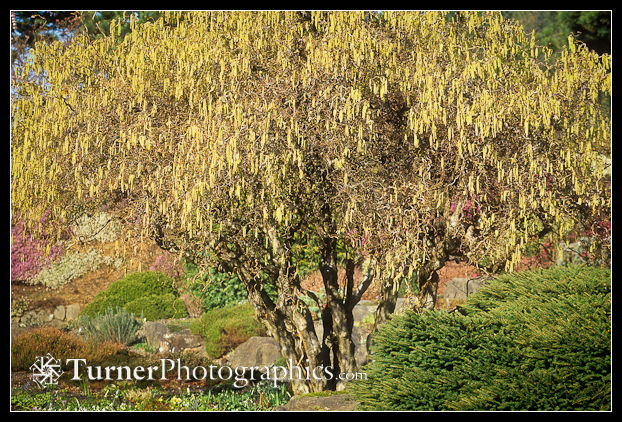
Corylus avellana, the non-native one, is planted widely as a horticultural specimen, especially the cultivar ‘Contorta’ shown above in the UBC Botanic Garden a few years ago. It’s otherwise known as the contorted hazel or Harry Lauder’s walking stick. The uncontorted form is cultivated commercially to produce copious quantities of very tasty nuts, particularly in the Willamette Valley.
Corylus cornuta, the native species, comes in two varieties: var. californica (California hazelnut) and var. cornuta (beaked hazelnut). As you would expect, the varieties are similar and the distinctions small. I won’t worry you about them here.
Variety californica is limited to the west coast from British Columbia to California. Variety cornuta is more widespread and can be found all across North America, according to the USDA PLANTS database.
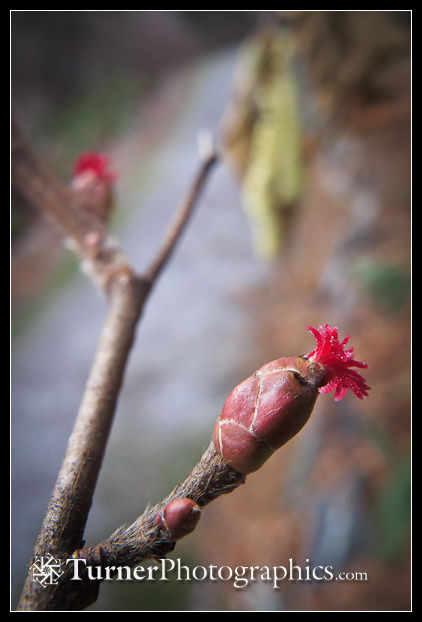
Both species bloom early in the spring with pendant yellowish male catkins and tiny red petalless flowers. The catkins are showy, but you have to look closely at the twigs to find the female flowers. Both are on the same plant, but there are many more male catkins than female flowers.
This photo shows the red female blossom on a non-native hazelnut, photographed along Whatcom Creek in Bellingham.
So how do you tell them apart?
Female flowers like these don’t provide many clues.
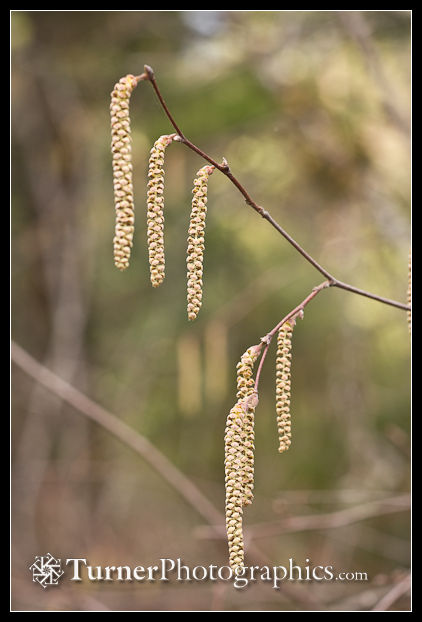
Non-native “Euro-filbert” C. avellana usually blooms first. In most of its range it will begin blooming as early as December and the catkins will be looking tired by mid-March. It also usually has catkins in clusters of three. This isn’t completely reliable because catkins fall off and there is natural variability. But taken as a whole, looking at all the clusters of catkins on a plant you’ll find more in groups of three than singtons and pairs.
C. cornuta usually starts blooming in mid-March. It’s catkins are most commonly in clusters of two or single. Again, you’ll find some threesomes, but taken as a whole if there are more singles and pairs the plant is more likely to be the native species.
This photograph shows the male catkins of Corylus cornuta var. californica, photographed in southern Oregon last March. Notice the mostly single catkins.
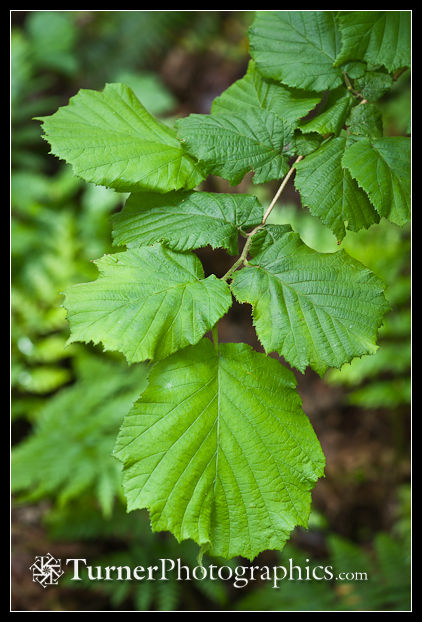
In mid-summer, after the catkins fall and the leaves have developed, it’s almost impossible to distinguish the species.
This photograph shows the foliage of the native species, growing in the UBC Botanic Garden native plant garden in Vancouver, BC.

In late summer both species develop their fruit, which is enclosed in thick, hairy, papery bracts. It’s at this stage that the two species are most easily separated.
C. avellana has bracts that are about as long as the nut, divided to near the base. The nut itself is clearly visible within the bracts.
This specimen of the European filbert was photographed along the Whatcom Creek Trail in Bellingham early last August.
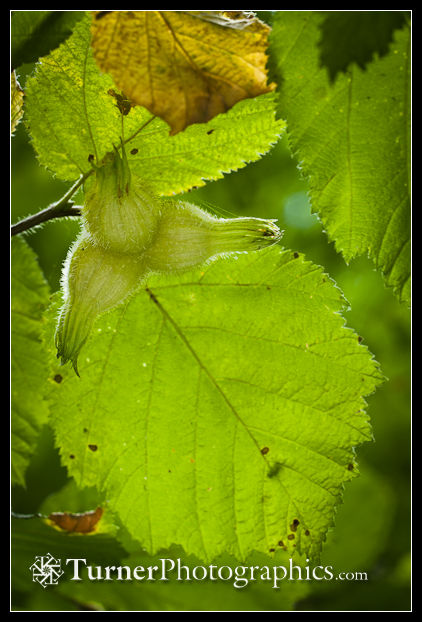
C. cornuta has bracts that completely enclose the nut, extending beyond it, and forming a “beak.” That’s where the common name comes from.
This triad of nuts on our native beaked hazelnut was photographed in Issaquah, also last August.
Squirrels love hazelnuts. They gather the nuts as soon as they mature. That makes it difficult to find shrubs with nuts in the fall. I’ve looked at hazelnut plants in our woodlands for years before finally finding some with nuts on them last year.
I learned to distinguish the hazelnuts from a key published in the Native Plant Society of Oregon Bulletin of March 2001. You can view a PDF of the issue online. Scroll down to page 36.
When you’re looking for shrubs to plant in the back of your border, consider adding one or more of our native hazelnuts. You’ll enjoy the spring blossoms, it’s an attractive shrub providing lots of hiding places for birds when leafed out, and the squirrels love the nuts. They grow to around 10’ tall. Like other natives they need little care once established.


Great article and pictures of the filberts! I learned something new. Looking foreward to your new book!
Eastern Filbert Blight just killed my beautiful contorta. Please watch out for this disease and choose resistant cultivars! It is an amazing and unusual addition to any garden.